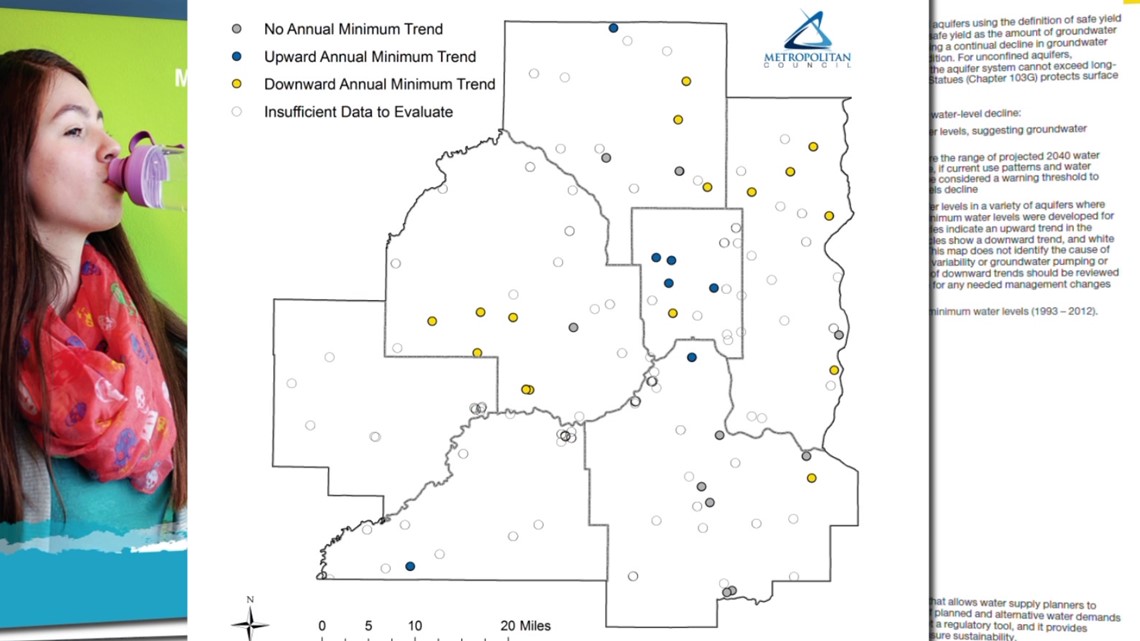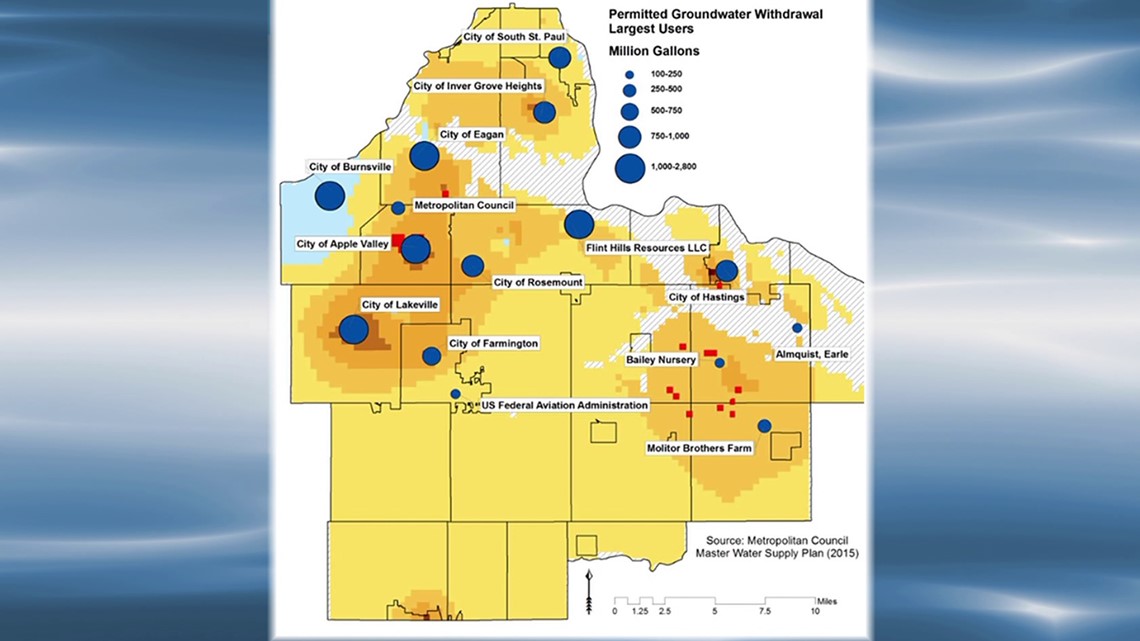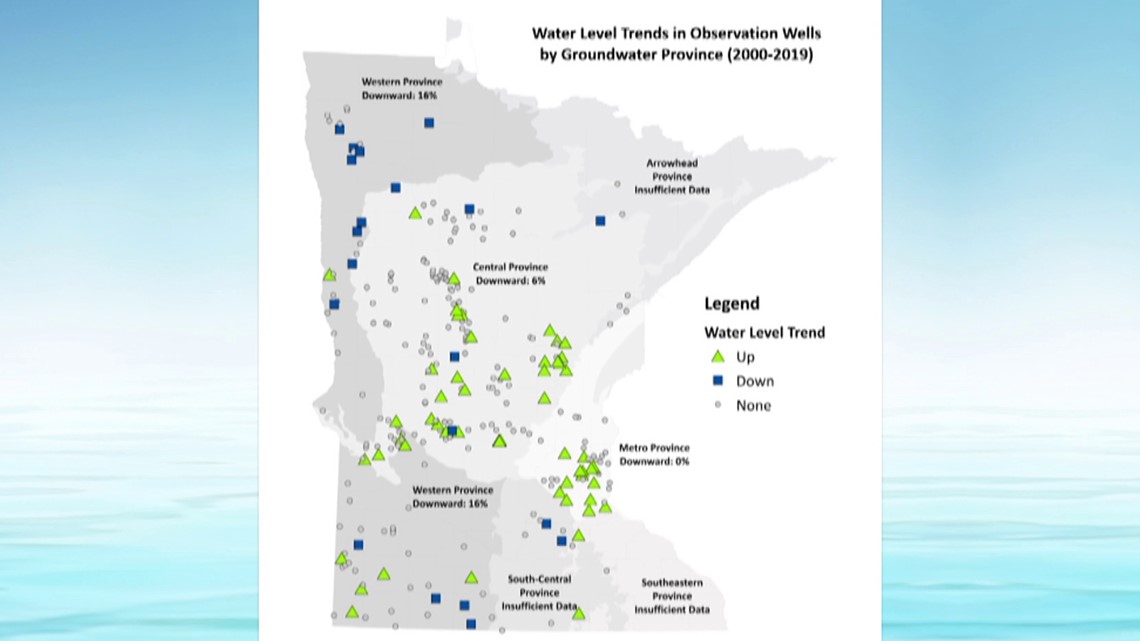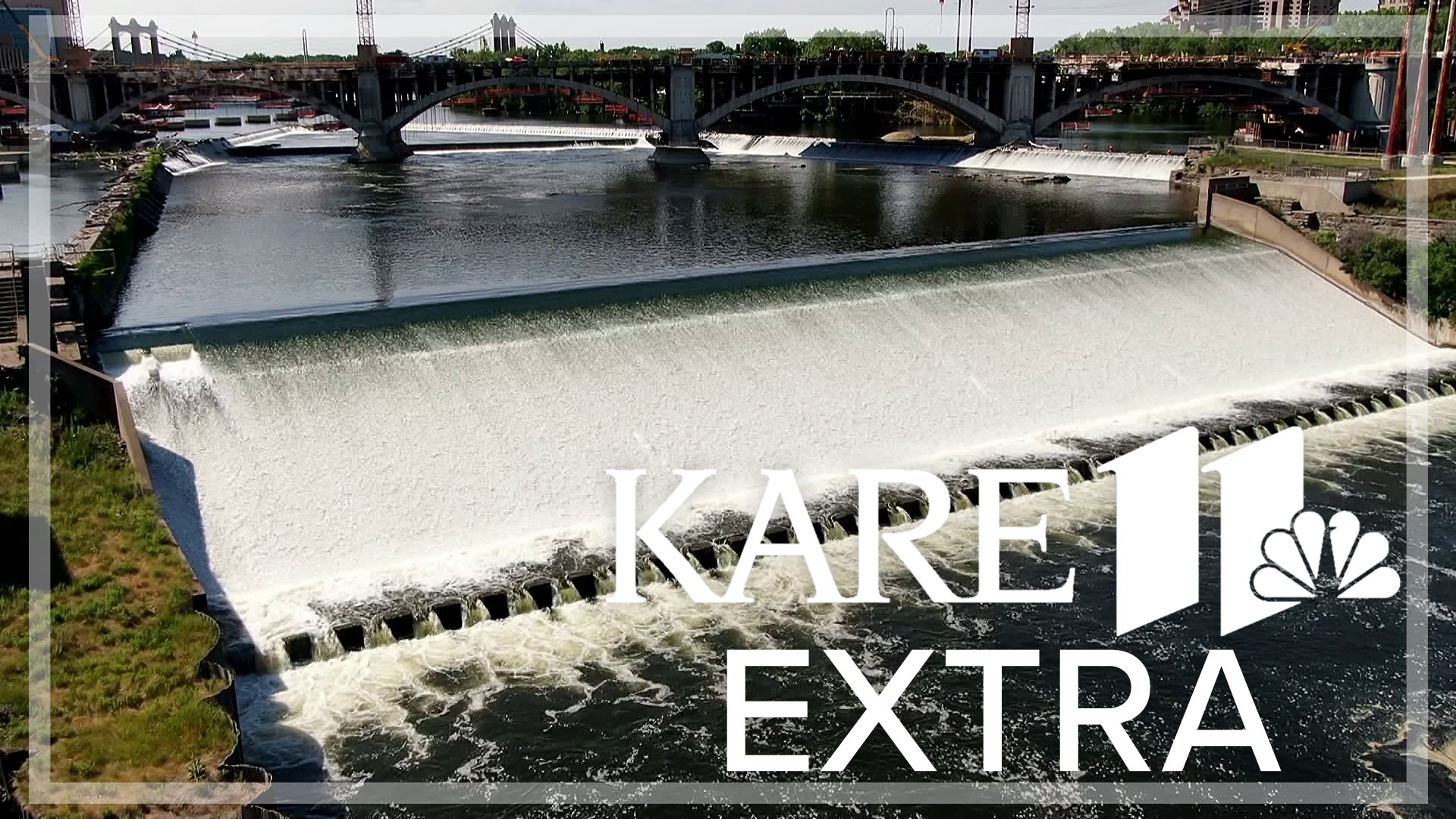MINNEAPOLIS — As you may know, water is more than a moniker in Minnesota; it's a way of life.
We are, officially, the land of 11,842 lakes (> 10 acres). In Minnesota, we have 201 Mud Lakes, 154 Long Lakes and 123 Rice Lakes alone, while other states — like Ohio — have 110 total lakes.
There's about an acre of water for every 20 acres of land here with more coastline than California, Florida and Hawaii combined, according to the Minnesota Department of Natural Resources.
“We have a lot of water, but that doesn't mean we have excess water,” said Barb Naramore, deputy commissioner of the DNR. “I think among some folks in Minnesota there's a mindset that we have plenty of water.”
This is where the record scratch occurs in the video. Most of us tend to think that the Land of 10,000 Lakes has a rather unlimited supply of water. To explore what Naramore means by this, we set out to answer two seemingly simple questions: How much water do we actually have in Minnesota? And how much do we actually use?
We know there's a lot of surface water in Minnesota, as about 6% of the entire state is covered with rivers, lakes and wetlands — but that's not what most of us drink.
In fact, 75% of the drinking water and 90% of irrigation water comes from aquifers under the ground.
According to the University of Minnesota Water Resources Center, we drink, wash, water and flush about 315 billion gallons of groundwater a year. That's like a half-million Olympic swimming pools or two-and-a-half Lake Minnetonkas.
But to know if our water use is sustainable, we have to know how much water we've drawn from underground.
Ellen Considine is a hydrologist supervisor with the DNR. She says we have a good idea of how much is down there, but certainly no perfect picture.
“I like to think of glaciers as drunk bulldozers,” said Considine. “Going back and forth over the landscape and they deposited our aquifers in very unpredictable ways and in unpredictable patterns and then they put a bunch of dirt on top of them. So we can't see them.”
Our best tools for monitoring groundwater are wells. Considine says this can accurately show the effects of how much we're pumping from the aquifers in different parts of the state.
At one site on the northwest side of White Bear Lake, the DNR has four wells, each drilled to a different depth to monitor the four, layered aquifers beneath most of the metro.
When asked about population growth and future use of these aquifers, Considine said, “Yeah, I'd say that concern is always there.”
A water-planning report from the Metropolitan Council shows that we are drawing more water from certain areas in the metro faster than they can fill back up.
The yellow dots show wells over time, where the water table is falling year over year.


In Dakota County, which draws the most groundwater per capita of any county in the metro, the Met Council projects that by 2040, periods of drought are "highly likely to result in local shortages" with some cities in the county seeing a 50% depletion of aquifer water.
“If we use water the same way now in the future, we are going to put additional stress on the aquifers," said Lanya Ross, an environmental analyst with the Met Council. “We were trying to highlight areas where we want to pay attention going into the future.”


This does not spell doom across the state. Far from it. Experts say we could safely pump even more water in many parts of the metro.
But it does spell caution.
“In the metro, we are so lucky. We have generally pretty plentiful aquifers. We should be responsible with them, but they are pretty plentiful. Western Minnesota, the arrowhead in the northeast — very, very limited aquifers. There's just a lot less groundwater available,” said Considine.


An example of what can go wrong — that did not make the news — happened two summers ago in Warren, Minnesota.
“We were worried that the city of Warren was going to run out of water,” said Considine.
During the drought year of 2021, agricultural irrigation quadrupled in the Warren area, according to a Groundwater Technical Review by the DNR. The extra usage plummeted the aquifer's water level, dropping some 70 feet in one summer season down to a record low. This triggered the DNR to immediately suspend irrigation permits in the area.
“Irrigators were pumping a lot of water, understandably. They had permits, and they needed to keep their crops alive. But as we looked at the data, we realized that if we at the DNR didn't intervene pretty quickly there was a risk there that the city of Warren would run out of water,” said Considine.
Understanding the complexity of the state’s hydrological system can be quite the task. So, we asked the DNR’s state climatologist, Luigi Romolo, to summarize.
“I think that perhaps the biggest change will be the perception that Minnesota's water supply is a bottomless pit, and I think people are starting to realize that there is a finite amount of water here in Minnesota. Even in the Land of 10,000 Lakes,” said Romolo.
Watch more local news:
Watch the latest local news from the Twin Cities in our YouTube playlist:

